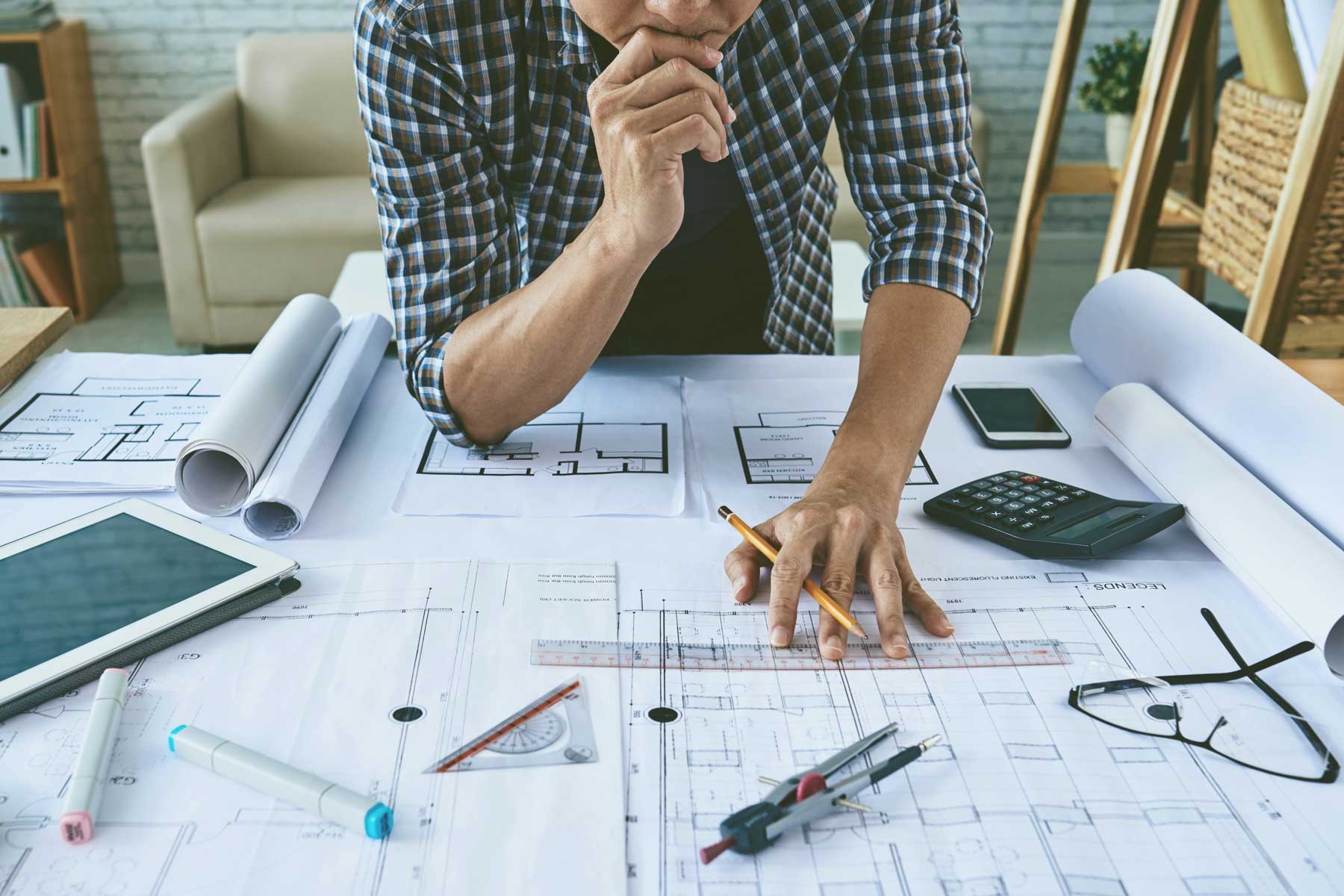Architect Recommended Apps for 3D Modeling
Recognizing the Diverse Job Paths Available for Aspiring Architect
As a hopeful Architect, you have a globe of profession courses waiting on you. Each path supplies distinct difficulties and chances to use your imagination and technological know-how. Whether you're attracted to traditional design or the subtleties of sustainable design, there's a niche that lines up with your interests. Comprehending these varied options can shape your specialist journey, however which instructions will you pick to discover first?
Traditional Style: Creating Structures and structures
Conventional architecture focuses on developing buildings and structures that blend performance with visual charm. Your layouts can mirror social heritage, showcasing neighborhood practices while fulfilling modern requirements.
You'll create skills in drafting, model-making, and site evaluation, allowing you to picture and connect your concepts properly. Engaging with clients, you'll need to recognize their vision and convert it right into feasible designs.
Additionally, developing codes and sustainability methods are crucial in your job, guaranteeing your structures are ecologically friendly and risk-free. As you grow in your career, you'll find chances in household, commercial, and even reconstruction projects, each offering unique obstacles. Accepting traditional style leads the way for a satisfying career that pays tribute to the past while shaping the future.
Urban Preparation: Shaping Areas and Public Spaces
As a hopeful Architect, you can play an essential duty as an urban organizer, transforming exactly how communities interact and operate. By utilizing area interaction strategies, you'll ensure that homeowners have a voice in shaping their setting. Plus, incorporating sustainable style concepts will assist develop spaces that not just meet today's requirements yet also secure the future.
Role of Urban Planners
While lots of could think about engineers as the sole dreamers behind structures, metropolitan coordinators play an important duty fit the wider landscape of areas and public areas. They analyze land use, zoning regulations, and neighborhood requires to create lasting environments that enhance top quality of life. By working together with different stakeholders, you'll aid design parks, transportation systems, and houses that promote social interaction and ease of access. Urban coordinators additionally concentrate on environmental factors to consider, ensuring that developments incorporate eco-friendly areas and assistance biodiversity. Your experience in spatial style and area characteristics permits you to picture future development while protecting social heritage. In this critical duty, you'll straight affect exactly how individuals experience their surroundings, making every job a chance for positive change.
Area Interaction Strategies
Effective area engagement methods are important for city planners to ensure that the voices of locals are listened to and valued in the preparation process. To cultivate meaningful discussion, you need to prioritize open discussion forums and workshops where neighborhood participants can express their ideas and worries. By proactively incorporating and listening feedback, you'll produce spaces that reflect the neighborhood's demands, inevitably leading to even more sustainable and successful metropolitan atmospheres.
Lasting Design Concepts
When designing urban spaces, incorporating sustainable layout concepts is essential for producing atmospheres that flourish both ecologically and socially. You ought to start by concentrating on energy efficiency, using materials that reduce waste and promote recycling. Consider incorporating environment-friendly rooms, like yards and parks, to boost biodiversity and improve air quality. Promoting walkability and public transport can decrease dependence on vehicles, promoting a much healthier area.
Creating with water preservation in mind is also vital-- assume regarding rain yards and permeable surface areas to handle stormwater. Involving neighborhood members throughout the planning process assurances that the spaces you produce meet their demands and motivate social communication. By accepting these concepts, you'll add to dynamic, lasting metropolitan landscapes that profit everybody.

Landscape Design: Creating Sustainable Outdoor Settings
As you discover landscape architecture, you'll find crucial style concepts that create lovely and useful outdoor areas. Sustainable practices play a crucial duty in ensuring these settings flourish while decreasing environmental effect. Plus, you'll locate a variety of job possibilities that enable you to make a genuine distinction in exactly how individuals interact with nature.
Style Concepts in Landscape
Understanding design concepts in landscape design is crucial for producing sustainable exterior environments that harmonize with nature. You'll need to ponder elements like percentage, balance, and scale to guarantee your styles feel cohesive and welcoming. Additionally, pay interest to seasonal adjustments, designing with products that match the environments year-round.
Lasting Practices Introduction
Sustainable methods in landscape architecture not only concentrate on aesthetics however also prioritize eco-friendly health and resource conservation. You can design areas that advertise soil health, such as utilizing natural materials and practicing permaculture concepts. Ultimately, these methods ensure your layouts profit both individuals and the environment for years to come.
Profession Opportunities Exploration
With a solid structure in lasting practices, landscape architecture uses a selection of job courses that permit you to make a significant effect on the atmosphere. You can function as a landscape designer, producing cosmetically pleasing and useful exterior rooms, or concentrate on ecological remediation, aiding to revitalize broken ecological communities. Urban organizers often collaborate with landscape architects to create green rooms in city setups, improving city livability. If you're passionate about education and learning, take into consideration coming to be a landscape design teacher, inspiring future generations. Additionally, you might function with nonprofits concentrated on environmental sustainability or engage in study to introduce new practices. Each course not only shapes beautiful settings however also fosters a much healthier world for future generations.
Sustainable Design: Focusing on Eco-Friendly Practices
As you discover your profession in architecture, welcoming eco-friendly techniques can set you apart in an affordable area. Sustainable design concentrates on producing buildings that lessen environmental effect while enhancing passenger wellness. By including renewable products, energy-efficient systems, and sustainable structure techniques, you'll add to a greener future.
Beginning by acquiring expertise of eco-friendly qualifications like LEED or BREEAM, which can strengthen your credentials. Consider just how all-natural light, ventilation, and thermal effectiveness can enhance layout. Collaborate with engineers and ecological professionals to address introduce services that minimize waste and save sources.
Do not forget the significance of neighborhood participation-- interesting local stakeholders can inspire styles that integrate with the setting. As clients progressively prioritize sustainability, your know-how in environmentally friendly methods will not only draw in jobs however additionally accomplish your interest for liable architecture. Accept this vital element of the occupation, and view your profession thrive.
Historic Preservation: Safeguarding and Bring Back Cultural Heritage
While you commence on your architectural trip, take into consideration the crucial duty of historical conservation in preserving our cultural heritage. This field concentrates on the protection and restoration of significant structures, websites, and frameworks that inform the stories of our past. By taking part in historical conservation, you'll aid secure the building tradition that shapes community identification.
As a historical preservation Architect, you'll assess historic significance and analyze the problem of structures. You'll work very closely with conservationists and chroniclers to guarantee genuine remediation techniques are utilized. This career course allows you to mix creativity with study, enabling you to make services that value original products and craftsmanship.
Your work not just adds to sustainability by recycling existing structures however additionally fosters a feeling of satisfaction within neighborhoods. Welcoming this path will certainly aid you end up being a guardian of background, preserving the tales and looks that enrich our lives.
Interior Style: Enhancing Indoor Spaces
Historic conservation and indoor architecture both share a dedication to enhancing the developed environment, however they concentrate on different aspects. While historical conservation emphasizes preserving a framework's historical and cultural worth, indoor architecture nos in on enhancing interior spaces for capability and aesthetics.
As an ambitious Architect, you'll discover that indoor architecture enables you to mix creative thinking with technical abilities. You'll develop rooms that not only look excellent but additionally promote convenience and efficiency. This area includes recognizing how light, shade, and materials engage within a space, impacting state of mind and usability.
You'll function on numerous jobs, from domestic homes to business workplaces, ensuring that each atmosphere fulfills the needs of its occupants. By prioritizing user experience, you can transform interiors into inspiring and functional rooms, making a substantial influence on exactly how individuals interact with their surroundings. Welcome the possibility to enhance interior settings and form the means individuals function and live.
Industrial Layout: Combining Capability With Aesthetic Appeals
Industrial style plays a crucial role in creating products that seamlessly blend aesthetic appeals with performance, ensuring that what you make use of daily is not only aesthetically enticing however likewise functional. As an check out here ambitious Architect, you could immerse yourself in this area, concentrating on developing everything from furnishings to customer electronic devices. Your work involves understanding customer requirements, materials, and manufacturing processes, permitting you to develop ingenious services that improve everyday experiences.
In industrial style, you'll usually collaborate with marketers, makers, and designers, guaranteeing that your styles are not only attractive but additionally feasible. This profession course supplies a vibrant environment where imagination fulfills practicality, making it a rewarding option for designers interested in shaping the products of tomorrow.
Often Asked Concerns
What Educational Certifications Do I Required to Come To Be an Engineer?
To come to be an architect, you'll need a professional degree in architecture, generally a Bachelor's or Master's. Furthermore, you'll have to complete a teaching fellowship and pass the Architect Enrollment Evaluation to practice legally.
Exist Accreditation Demands for Different Building Occupation Paths?
Yes, there're accreditation demands for different architectural paths. Architect. You'll require to pass examinations, total internships, and occasionally go after specialized training, depending upon your selected emphasis, like landscape design, city layout, or historic preservation
What Software Program Abilities Are Important for Architects Today?

How Can I Gain Practical Experience While Studying Design?
You can gain sensible experience by interning at building companies, joining design competitors, volunteering for community jobs, or working together with schoolmates on real-world tasks. These opportunities boost your skills and construct important links in the market.
What Job Opportunities Exist Outdoors Conventional Architecture Firms?
You can discover different work possibilities outside standard architecture companies, like metropolitan planning, interior decoration, landscape architecture, construction management, property development, and even roles in sustainability consulting. Each deals special challenges check here and rewards.
Whether you're drawn to traditional style or the subtleties of lasting layout, there's a niche that aligns with your interests.When designing city rooms, including lasting layout concepts is vital for developing settings that grow both environmentally and socially.As you discover landscape style, you'll discover essential style concepts that create useful and attractive outdoor areas.Comprehending layout concepts in landscape style is vital for creating sustainable outside settings that integrate with nature.In commercial design, you'll typically team up with designers, marketing professionals, and suppliers, making sure that your styles are not only attractive but likewise practical.